An Anti-Public Art
PFP NFTs imagine a shared space where only owners of digital property matter.
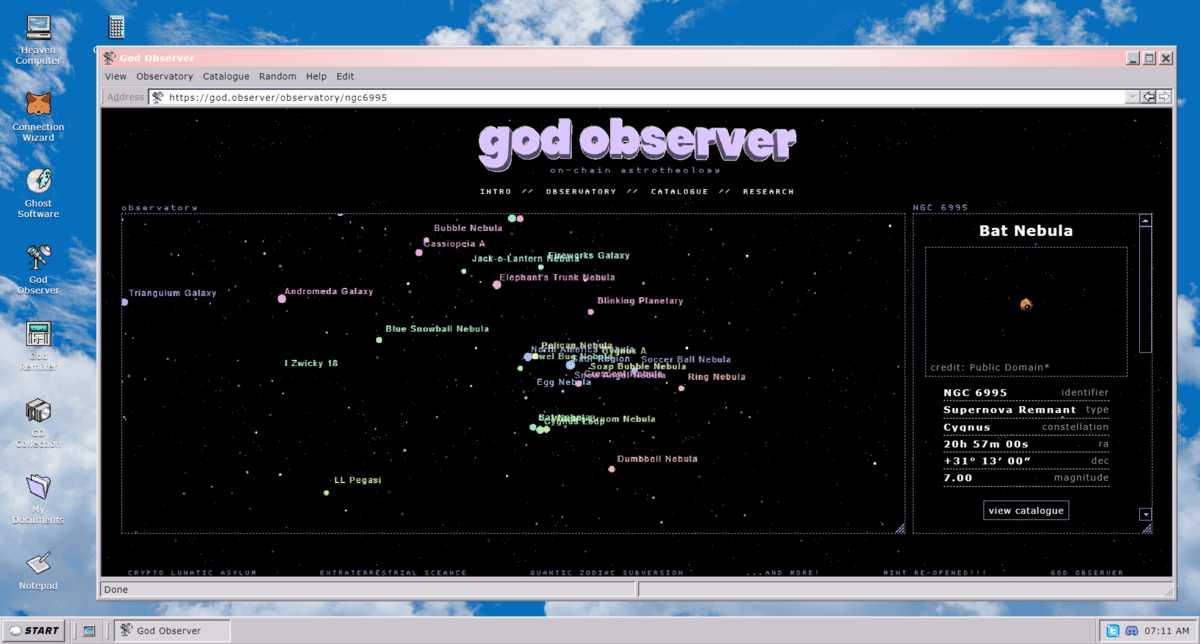
Gaming is the biggest sector of the entertainment industry, and artists who are now in their prime grew up playing on consoles and personal computers. So it’s likely that the impact of this experience can be felt in their work, even if they don’t make games as such. To get a better understanding of how the influence of games is reflected in contemporary media art, Mitchell F. Chan, the guest editor of Outland’s games issue, asked five artists about their favorite titles and what they gleaned from them. Below we present responses from Dmitri Cherniak, whose generative art collections identify an aesthetics of logic; Godmin, who uses on-chain algorithms to glitch 3D files that populate worlds of ghosts and aliens; Noor Alé, associate curator at the Power Plant in Toronto; and 113 from the studio Mathcastles, whose projects explore the conceptual possibilities of the Ethereum Virtual Machine. Their remarks to Chan were transcribed and condensed by Outland’s editors. Artist Sarah Friend was also invited to respond to this survey, and she ended up writing about the impossibility of articulating a single definition of what a game is. Her essay can be read here.
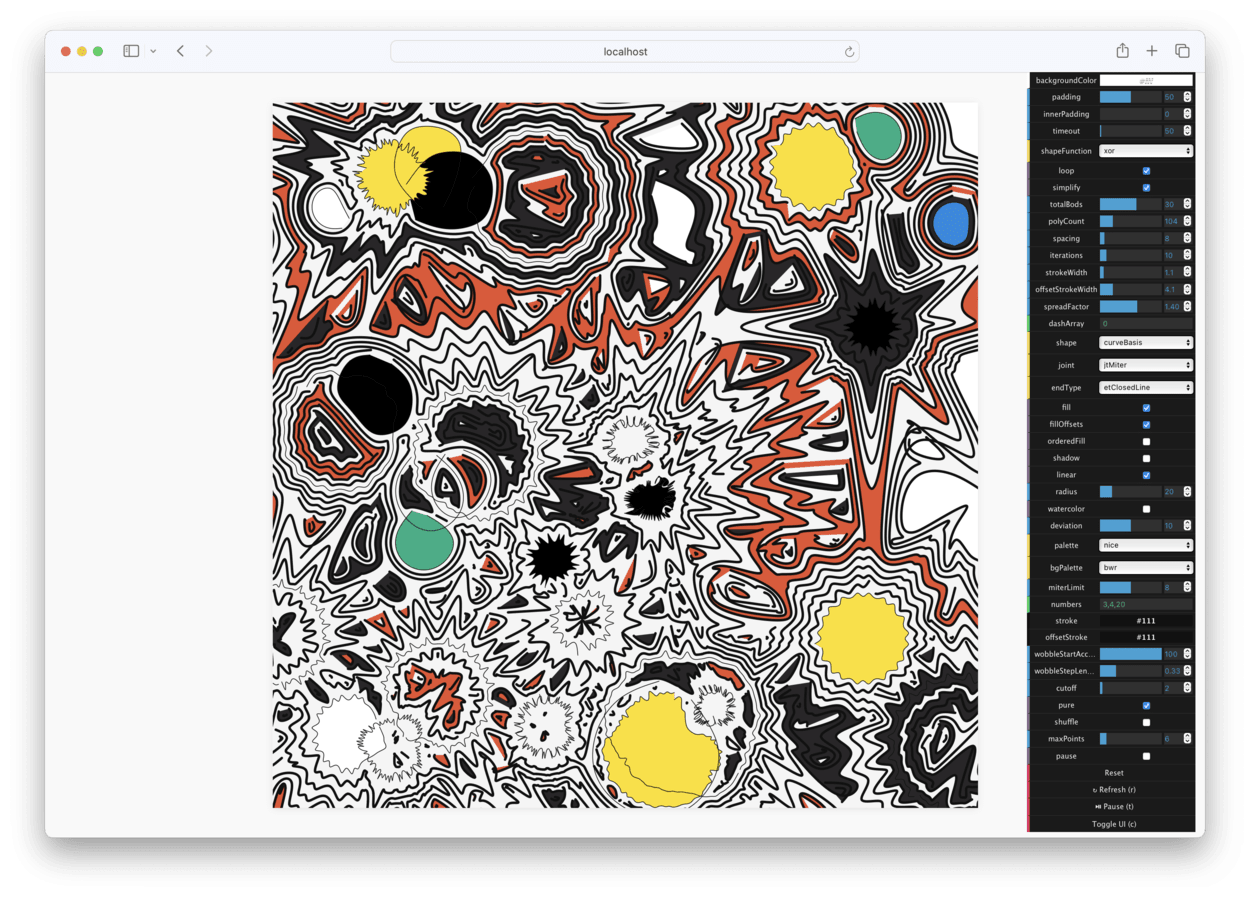
The game that has had the most influence on me is Mario Kart 64 (1996). As a child, I played an ungodly amount with my siblings and my dad, since all of us could play at the same time. Years later when an N64 system was discovered in our high school government office, my friends and I started playing on it during spare periods. All those years of childhood practice seemed to have paid off, as I went undefeated for all of high school. At some point I went online to look up just how much of an outlier I was and came across MarioKart64.com, which was my first entirely online community experience with strangers from around the world. I ranked in the top few hundred in the world and was considered a “pro” at the time. This was before social media was prevalent and digital video cameras weren’t entirely ubiquitous, but we shared tips and tricks while trying to improve our race times. My rankings have slipped, and I haven’t participated in the community for nearly twenty years, but I will always remember Mario Kart 64— and how it brought me online to bond with strangers all over the world—fondly.
I think that playing and making video games and coding generative art can be deeply connected. Understanding physics and the visual forms that can emerge from simple object interactions, as well as novel mechanics to trigger and manipulate those forms, is really impactful in designing both video games and generative art.
One of my favorite games that highlights this is JezzBall (1992). It was created by Dima Pavlovsky and rose to fame after its inclusion in the Microsoft Entertainment Pack. It’s a game where an astoundingly simple interaction creates a whole universe of gameplay and a Mondrian-esque visual aesthetic. You can play it here.
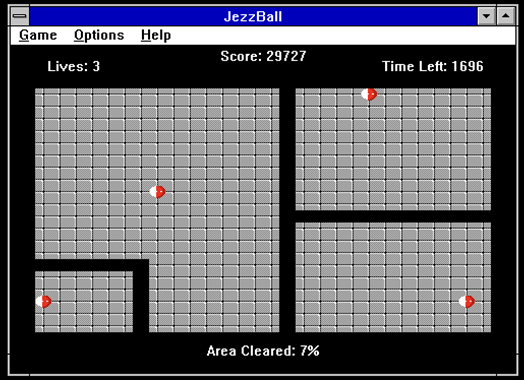
The goal of JezzBall is to section off at least three quarters of the screen by containing an increasing number of bouncing balls. You do this by shooting horizontal or vertical lines from your mouse cursor to demarcate the space. Once those lines hit an already established wall they solidify, but if a bouncing ball collides with an unfinished wall, the wall is destroyed, and you lose a life. At first you might just try to split the space down the middle, but as you advance you realize you can score more points by capturing as much space as possible, so you end up trying to make very thin strips and trap the balls to claim as much of the space as possible.
In the end, each level can feel like a generative output and is the result of a mix of human input, strategy and chance—which is similar to the systems and interfaces I build to make my art.
I also think there’s a lot to be said about debug views in games and making developer tools available to the end users. For example, the ascend function that lets you move vertically through the ceiling in Legend of Zelda: Tears of the Kingdom (2023) was originally a debug technique but was so compelling that it became part of the game. Some games ship with level editors so users can design their own maps within the system provided. This is how many renowned level designers got the chance to hone their skills in game design, and it reminds me of generative artists building a system that end users can engage with and leave their own mark on.
I grew up with games. But I had an older brother who was extremely anal about his save files. Back in the day you only had one save file per game, so he’d let me play but I could never save my progress because he was afraid I would mess it up. I played Grand Theft Auto: Vice City (2002) a whole lot, but since I couldn’t progress on the main quest, I’d just do a bunch of joy rides and killing sprees for fun. Or I would have to come up with my own personal missions in my head.
I was obsessed with Tears of Kingdom. I lost three months of my life to it. I’d do the side quests, but I also set personal quests for myself. I wanted to collect all the black horses I could find and give them rhyming names: Ramona, Fiona, etc. I’ve thought about ways I could incorporate some of the elements that I’ve learned from the game into my artwork. I have a domain called sky.luxury that I’d been wanting to use in a project for a while. Then I came up with the concept of having a sky world parallel to an earthlier world—that came from Tears of the Kingdom and its three-layered labyrinths where the underground, the ground, and the sky all connected to each other. I’ve been thinking of ways to make sky.luxury a sequel or a prequel to my work heaven.computer (2022). I felt burned out on the Y2K aesthetic of that project, and I realized I could add to the narrative in a cohesive way. A big goal of mine is to tell a story. My projects take place inside a narrative, and I try to create an atmosphere of discovery and exploration.
I approach games in terms of world building. I like it when the characters are lifelike enough that you get invested in their background stories but also fantastical enough that it’s still escapism from the real world. I want to talk to every NPC. That completism might come from the way I played games as a child, not being able to progress along the main quest line.
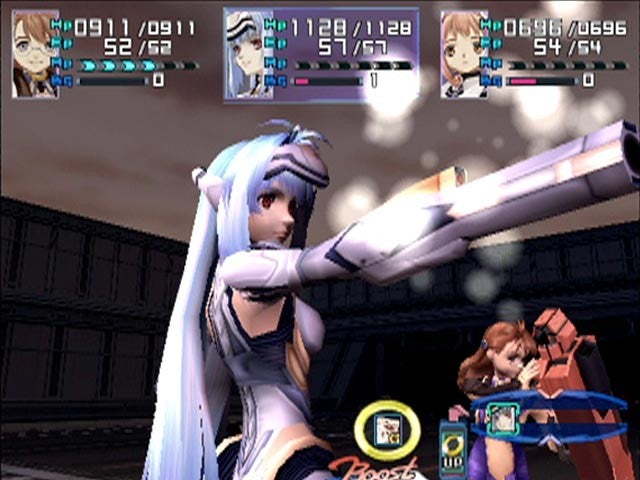
Video games are part of our social fabric, and they are part of our visual culture. I think the beauty of a great game is that it brings you into a visual story that unfolds over time. A game gives you the opportunity to enter into another dimension, one that would not exist if someone had not created it.
One game I love that gets overlooked is Xenosaga (2002). That game is kind of crazy: it combines Kabbalah and Jungian theory and Nietzschean philosophies in this futuristic world. It’s pretty convoluted, but I appreciate the way the game developer, Monolith, was thinking about larger questions about mankind and society, and how corporations are always trying to control the order of things. Sadly, the series, which was planned to have six episodes, was never finished—the developer abandoned it halfway through. Either it became too expensive, or there wasn’t enough consumer interest.
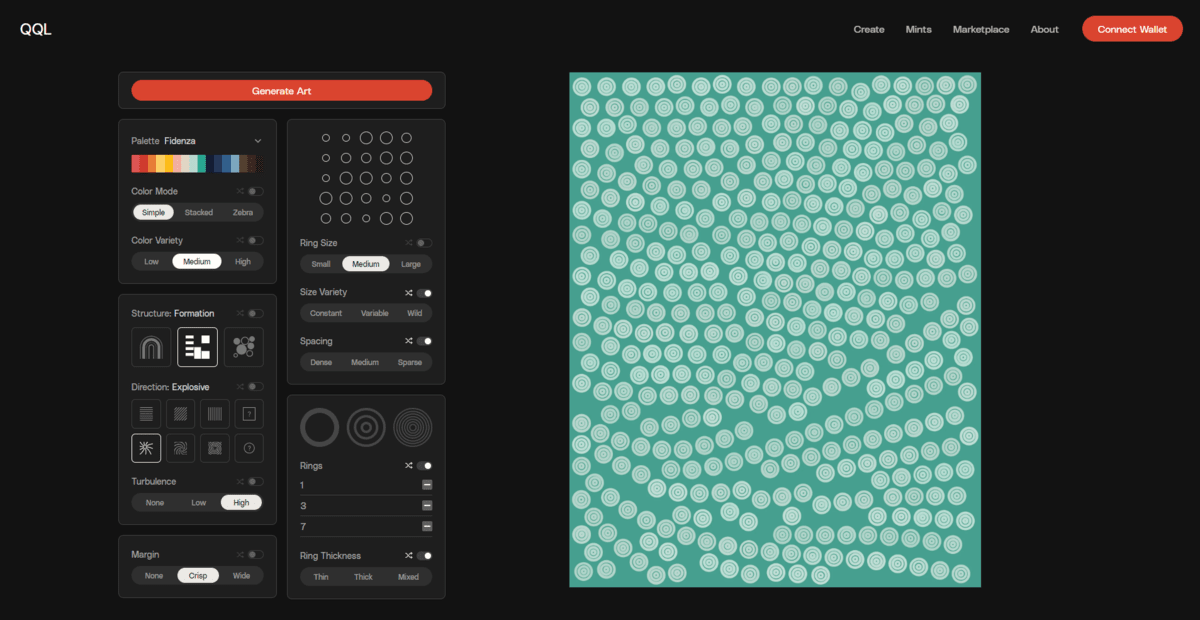
My favorite games?
Trickster answer: Tyler Hobbs and Dandelion Wist’s QQL (2022), as an artwork in the medium of Zelda labor. QQL is a generative art masterpiece, much more than has been acknowledged. It has gargantuan depth and breadth. A heavily compounded suite of techniques that majorly sum greater than their parts, demonstrating expert skill and taste in algorithmcraft. The piece also utilizes platform capitalism in a way I find reminiscent of video games, yet it deploys it in a strongly justifiable way. The composition produces a ridiculously vast output space, then hands you a hardhat and tells you to get to work exploring. Compare this to the video-game labor injunctions of Zelda’s fetch quests. You’re endlessly catching fairies in jars to trade for one-sixth of a stew ingredient to swap for a tree branch to forge into a raft oar to travel to an old man, etc. How about you pay me, pixel sprite townsperson? QQL pays me in endless aesthetic unfolding, and it’s a piece that can actually bear the weight of all that exploration. It’s worth the Zelda labor.
Conway’s Game of Life (1970). It might not seem like a video game by current standards, but it does have “game” in the title, and timesteps, and a board, and rules. And the win state is eternal: it’s humanity endlessly contemplating a god-tier combinatorial fireworks explosion, joyfully, with Wolfram-core astonishment at phenomena like glider guns and Life in Life. To me the piece occupies both categories in Matto’s gorgeous turn of phrase, used to describe the future of generative art: “zero player games and self driving paintings.” Conway’s Game of Life is a holy object to me.
Tetris and chess. Not just because they’re so unbelievably beautiful as systems, but because of their rhetorical power. I like to ask, “What is the plot of Tetris?” or “What is the plot of chess?” to strike at the heart of systems art (and take the ludology position in the always-obsolete ludology vs. narratology debate).
Ethereum and Bitcoin. They’re systems artworks, bare metal game engines with “win conditions.” Both utterly restructure the world and demonstrate the supreme gravity of artworks in the medium of computing. Wonderfully, neither inherently look like anything, which helps people reflect on the medium of systems, and how our society is still predominantly distracted with old media atop the computer rather than having vast clear thoughts or advanced, rich humanist discourse around computing itself.
Passage (2007) by Jason Rohrer. Because… just play it.

